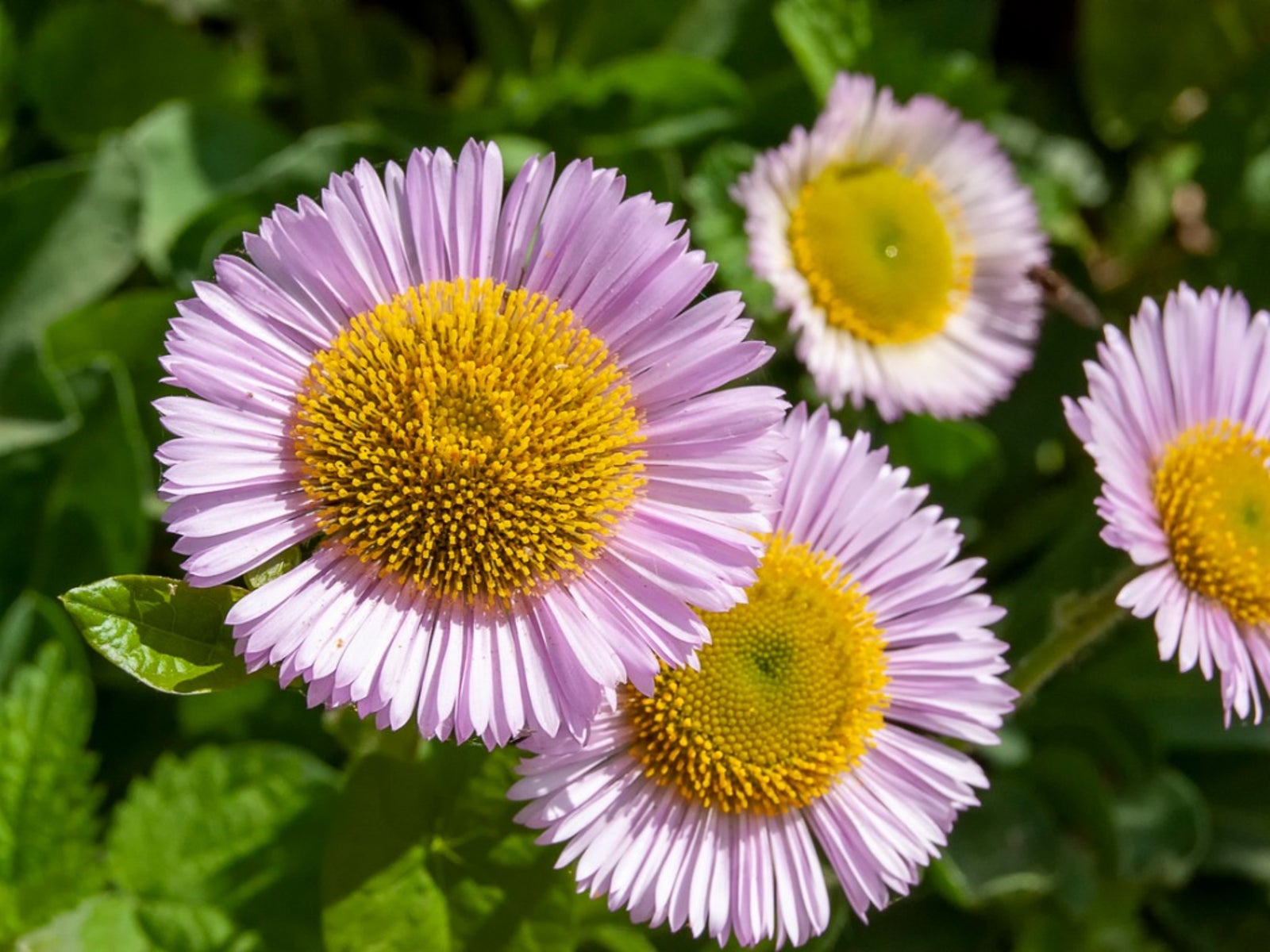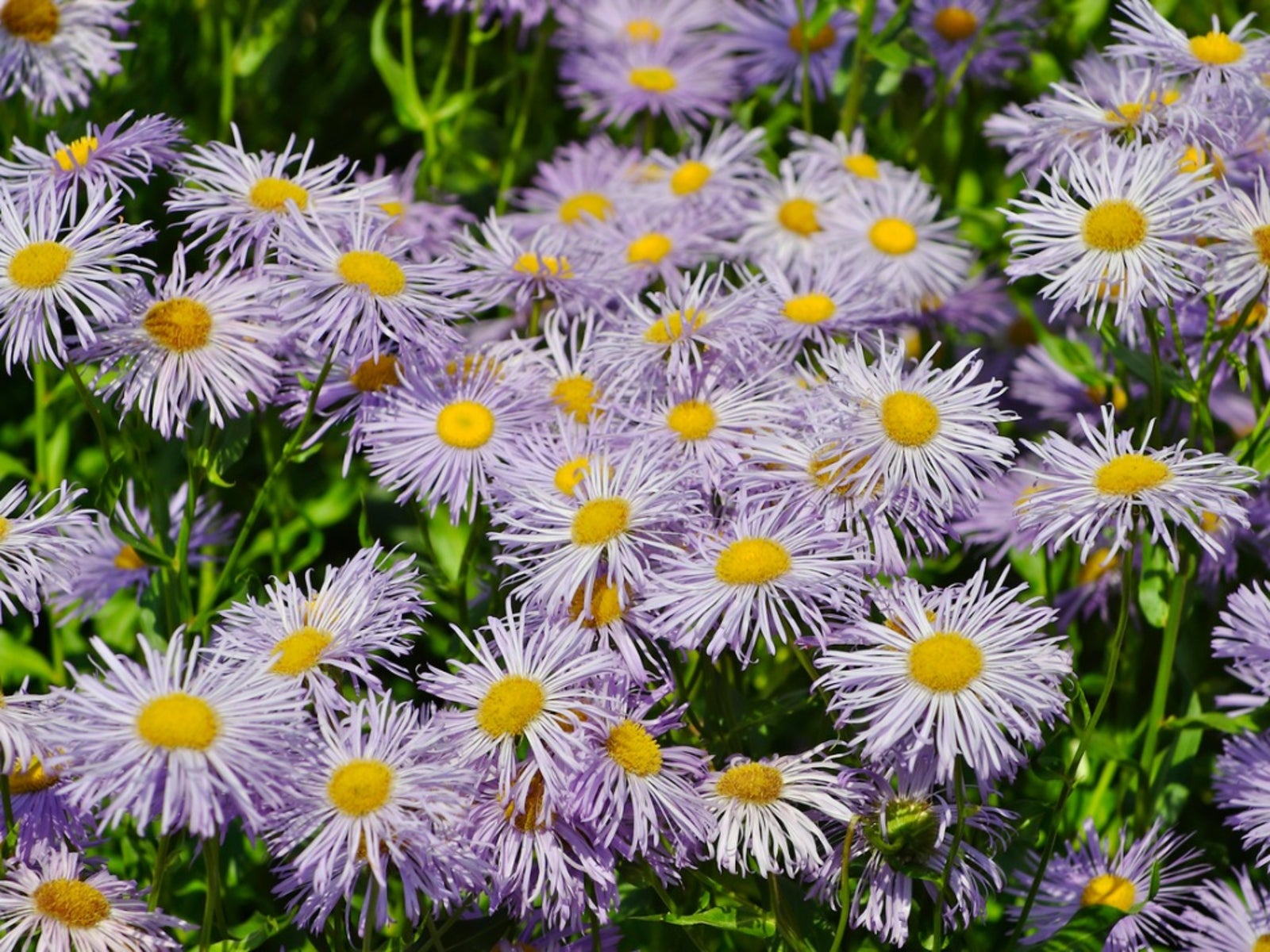Seaside Daisy Plants: Learn About Growing Seaside Daisies


What are seaside daisies? Also known as beach aster or beach daisy, seaside daisy plants are flowering perennials that grow wild along the Pacific Coast, from Oregon and Washington and down south to Southern California. This tough, little plant is found in rugged environments such as coastal scrubs and sand dunes.
Information About Seaside Daisy Plants
Seaside daisies (Erigeron glaucus) are low-growing plants that reach heights of 6 to 10 inches (15 to 25.5 cm), with a spread of 1 to 2 feet (0.5 m.). This evergreen perennial consists of glossy, grayish-green foliage. Attractive blooms with ice blue, daisy-like petals (sometimes with a lavender or pink tint) surrounding a large, bright yellow center. Seaside daisy plants are durable, but they don’t tolerate extreme cold. This plant is suitable for growing in USDA plant hardiness zones 8 through 10. In mild climates, seaside daisies may bloom well into winter.
Seaside Daisy Planting
Growing seaside daisies prefer well-draining soil and full sun, but the plants will tolerate light shade, especially in hot climates. The plant is well suited for xeriscaping, and also works well in rock gardens, borders, flower beds, in containers, and on slopes. Seaside daisy is highly attractive to butterflies and the colorful visitors love the long growing season.
Seaside Daisy Care
Seaside daisy care isn’t complicated, but it’s important to locate seaside daisy where the plants are protected from afternoon sunlight, as the intense heat will scorch the plant. Otherwise, just water the plant about once a week during dry weather. A 3-inch (7.5 cm.) layer of mulch keeps the soil cool and moist. Deadhead wilted blooms regularly to encourage continued blooming and to keep the plant tidy. Trim the plant down if it looks leggy in late summer; you’ll be rewarded with a rejuvenated plant and another flush of colorful blooms. Seaside daisy plants are easily propagated by stem cuttings, or by dividing the plants in early spring.
Gardening tips, videos, info and more delivered right to your inbox!
Sign up for the Gardening Know How newsletter today and receive a free copy of our e-book "How to Grow Delicious Tomatoes".

A Credentialed Garden Writer, Mary H. Dyer was with Gardening Know How in the very beginning, publishing articles as early as 2007.
-
 Looking For Plants To Give You The Soft And Fuzzies? Try These 5 Fuzzy Leaf Plant Options
Looking For Plants To Give You The Soft And Fuzzies? Try These 5 Fuzzy Leaf Plant OptionsLovers of texture, drama, silver foliage and tactile plants will adore these special sensory garden additions. These fuzzy leaf plant options will leave you all aglow
By Susan Albert
-
 Get Ready For A Summer Of Hummers! Grow These Full Sun Hummingbird Plants and Flowers
Get Ready For A Summer Of Hummers! Grow These Full Sun Hummingbird Plants and FlowersIf you’re lucky enough to enjoy a sunny backyard, make sure you are maxing out on your pollinator opportunities and grow these full sun hummingbird plants and flowers
By Tonya Barnett
-
 Fleabane Weed Control: How To Get Rid Of Fleabane Plants
Fleabane Weed Control: How To Get Rid Of Fleabane PlantsAlthough well-behaved hybrid varieties are available, many types of fleabane are invasive weeds that displace native plants. Learn more about fleabane control in this article so you can eradicate it should the need arise.
By Mary H. Dyer
-
 Daisy Fleabane Info: Can You Grow Fleabane In Gardens
Daisy Fleabane Info: Can You Grow Fleabane In GardensNative gardens can be as pretty as more formal gardens when flowering options like fleabane wildflowers are added. Read this article to learn more about growing daisy fleabane plants.
By Kristi Waterworth